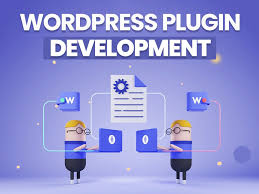
In this detailed guide, we will walk you through the process of developing a custom WordPress plugin from scratch. Whether you're looking to extend WordPress’s functionality or create a unique solution for a website, this tutorial will provide you with all the necessary tools, steps, and custom code to build your own plugin.
WordPress plugins allow you to add new features, modify the site’s behavior, or enhance performance without altering the core WordPress files. Developing a custom plugin gives you full control over your site’s functionality, offering flexibility to tailor features exactly to your needs.
What You'll Learn:
Setting Up Your Development Environment: Before diving into the plugin code, we’ll guide you on setting up a local development environment and configuring a WordPress test site. This ensures your development process is safe, efficient, and scalable.
Creating the Plugin Folder and Files: You'll learn how to structure your plugin by creating a dedicated folder in the
wp-content/pluginsdirectory. We’ll walk through how to create the essential plugin files, including:The main plugin file with a header
Additional files for functions, styles, and scripts
Creating a plugin activation/deactivation hook
Building Plugin Functionality: With the foundational setup done, we’ll move on to developing the core functionality of your plugin. This will include writing custom functions, adding WordPress hooks, and using actions and filters. Here are some custom code snippets that demonstrate core functionality:
Example 1: Simple Plugin with an Admin Settings Page
<?php /* Plugin Name: My Custom Plugin Plugin URI: https://example.com Description: A simple plugin that adds a custom settings page to the WordPress admin. Version: 1.0 Author: Your Name */ // Hook to create the admin menu function my_custom_plugin_menu() { add_menu_page( 'My Custom Plugin Settings', // Page Title 'Custom Plugin', // Menu Title 'manage_options', // Capability 'my-custom-plugin', // Menu Slug 'my_custom_plugin_settings_page', // Function to display the settings page 'dashicons-admin-plugins', // Icon 100 // Position ); } add_action('admin_menu', 'my_custom_plugin_menu'); // Callback function to display the settings page function my_custom_plugin_settings_page() { ?> <div class="wrap"> <h1>Custom Plugin Settings</h1> <form method="post" action="options.php"> <?php settings_fields('my_custom_plugin_options_group'); do_settings_sections('my-custom-plugin'); ?> <table class="form-table"> <tr valign="top"> <th scope="row">Custom Text Field</th> <td><input type="text" name="my_custom_plugin_text" value="<?php echo esc_attr(get_option('my_custom_plugin_text')); ?>" /></td> </tr> </table> <?php submit_button(); ?> </form> </div> <?php } // Register settings function my_custom_plugin_register_settings() { register_setting('my_custom_plugin_options_group', 'my_custom_plugin_text'); add_settings_section('my_custom_plugin_main_section', 'Main Settings', null, 'my-custom-plugin'); } add_action('admin_init', 'my_custom_plugin_register_settings'); ?>
Explanation:
This plugin creates a settings page in the WordPress admin menu.
It includes a text field where users can enter a value and save it in the WordPress options table.
Enhancing Plugin Functionality: Once you have the basics in place, we’ll show you how to add more advanced features such as custom post types, taxonomies, widgets, shortcodes, or integration with third-party APIs. Here is an example of creating a custom post type:
Example 2: Creating a Custom Post Type
// Register a custom post type function my_custom_post_type() { register_post_type('my_custom_post', array( 'labels' => array( 'name' => 'My Custom Posts', 'singular_name' => 'My Custom Post' ), 'public' => true, 'has_archive' => true, 'supports' => array('title', 'editor', 'thumbnail') )); } add_action('init', 'my_custom_post_type');
This code registers a new custom post type called
my_custom_post, allowing you to create a unique content type on your site.Ensuring Plugin Security: Security is critical when developing plugins, especially if they handle user input. We’ll cover best practices to protect your plugin from vulnerabilities like SQL injection, cross-site scripting (XSS), and other common exploits.
Testing and Debugging: Learn how to test your plugin effectively, including using debugging tools, logging errors, and troubleshooting issues. We'll also explain how to ensure your plugin is compatible with different versions of WordPress.
Optimizing and Enhancing Plugin Performance: Discover methods to make your plugin more performant, including caching techniques, using the WordPress API efficiently, and reducing unnecessary database queries. Performance is a key factor in keeping your plugin fast and lightweight.
Deploying the Plugin: Once the plugin is developed and tested, we’ll guide you through how to deploy it to a live website. We'll also explain how to package your plugin for distribution via the WordPress Plugin Repository or your website.
Providing Support and Updates: Learn the best practices for maintaining your plugin, releasing updates, and handling user support. We’ll discuss version control, backward compatibility, and how to collect user feedback to continuously improve your plugin.
Conclusion:
By the end of this guide, you'll have a fully functional, custom WordPress plugin tailored to your needs. You'll understand how to structure your plugin, add key features, secure it, and deploy it to production. Whether you're building a plugin for personal use or for distribution, this tutorial will provide the tools and techniques needed for successful WordPress plugin development.
